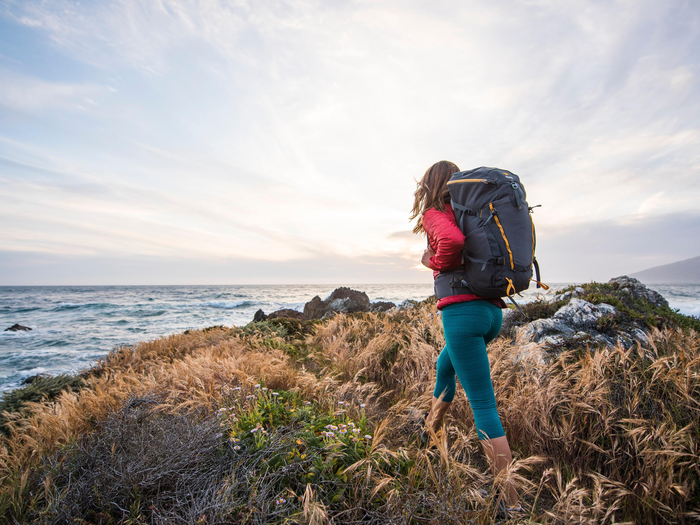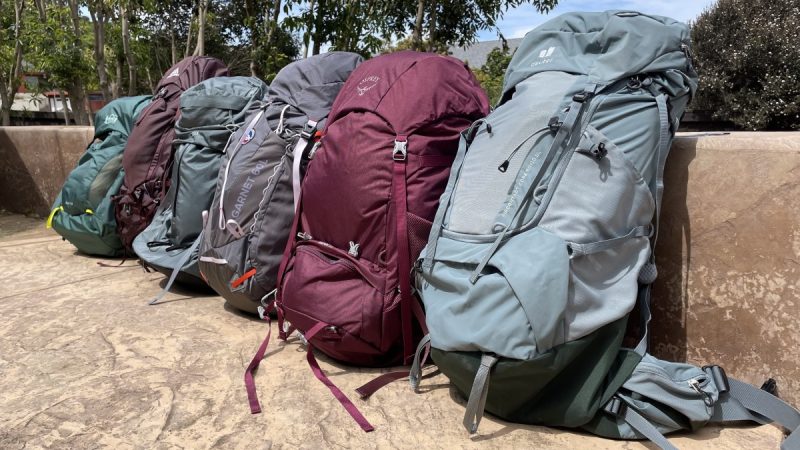You need the best expedition backpack for the best hiking or trekking experience. Embarking on an expedition, whether it’s a multi-day hike, a mountaineering adventure, or a backpacking trip through uncharted territories, requires careful consideration when choosing the right backpack. The perfect expedition backpack should not only accommodate all your gear but also provide comfort, durability, and organization.
It becomes essential to make an informed decision among the multitude of options available. By evaluating your needs, determining the right size and capacity, prioritizing comfort and fit, considering durability and weather resistance, and evaluating organization and accessibility features, you’ll be equipped to find the best expedition backpack that will serve you well throughout your adventurous endeavors.

In this article, we will guide you through the essential factors to consider when selecting the best expedition backpack that suits your needs, ensuring a successful and enjoyable journey.
Assess Your Needs
Before delving into the vast selection of expedition backpacks, it is essential to assess your specific needs and requirements. Begin by considering the type and duration of your expedition. Will you be embarking on a weekend trek or a month-long adventure? The duration of your journey will determine the size and capacity of the backpack you require. Furthermore, take into account the activities involved and the climate you will encounter. Each endeavor, whether it be mountaineering, hiking, or backpacking, may necessitate specific gear requirements.
Evaluate the gear you intend to carry, such as a tent, sleeping bag, cooking equipment, and clothing layers. Creating a comprehensive list will allow you to estimate the volume and weight of your equipment. This assessment will aid in determining the optimal capacity for your backpack. Remember that for comfortable carrying, the weight of your best expedition backpack should not exceed 20-30% of your body weight.

Understanding your needs is the first step towards finding the best expedition backpack for your adventure. By considering the type and duration of your expedition, evaluating your gear requirements, and estimating the necessary capacity, you can ensure that your chosen backpack will comfortably accommodate all your essentials throughout your journey.
Size and Capacity
When selecting the best expedition backpack, the size and capacity play vital roles. It is crucial to choose a backpack that is spacious enough to accommodate all your gear while maintaining a comfortable fit. Expedition backpacks are typically measured in liters, which indicates their storage capacity. Common sizes range from 40 to 90+ liters, with larger capacities being suitable for longer expeditions or carrying specialized equipment.
For shorter trips or ultralight backpacking adventures, a backpack with a capacity of 40 to 60 liters should suffice. These smaller packs encourage you to pack lighter, promoting efficiency and agility on the trail. On the other hand, longer expeditions or winter trips may require a larger backpack with a capacity of 60 to 80 liters or more. This increased capacity allows for carrying additional gear, extra clothing layers, and supplies needed for extended periods in the wilderness.
It’s important to find the right balance between size and functionality. While a larger backpack may provide ample storage space, it can become cumbersome and hinder mobility. Conversely, an excessively small backpack may lead to difficulties in fitting all your necessary gear, compromising your comfort and preparedness.

Consider the duration and nature of your expedition when determining the appropriate backpack capacity. Factor in the specific equipment and gear requirements for your chosen activity, such as climbing gear or camping essentials. Additionally, take into account any specialized equipment or additional items you may need to carry, such as camera gear or provisions for extended trips in remote areas.
By carefully assessing the size and capacity that aligns with the demands of your expedition, you can ensure that the best expedition backpack not only accommodates all your gear but also provides the ideal balance between storage space and mobility, enhancing your overall expedition experience.
Comfort and Fit
Comfort is of utmost importance when selecting the best expedition backpack, as it will be your constant companion during extended periods of carrying. Look for backpacks that prioritize comfort features, such as padded shoulder straps, a supportive hip belt, and an adjustable suspension system. The shoulder straps should be adequately cushioned to reduce pressure points and prevent discomfort on your shoulders. The hip belt should be wide and well-padded to effectively transfer the weight of the backpack to your hips, which can handle heavier loads more efficiently.
An adjustable suspension system is essential for a customized fit. It allows you to match the torso length of the backpack to your body proportions, ensuring optimal weight distribution. Some backpacks come in different sizes (small, medium, large) or offer adjustable frames to accommodate varying torso lengths. A well-fitted backpack should rest comfortably on your hips, transferring most of the weight to your legs rather than burdening your shoulders.
To ensure the right fit, it is recommended to try on different backpacks and assess their weight distribution. Load the backpacks with sandbags or weights similar to what you’ll be carrying on your expedition. Walk around the store or your home to gauge comfort and stability. Pay attention to any areas of discomfort or pressure points. Remember, an ill-fitting backpack can lead to discomfort, back pain, and even injuries during your expedition. Taking the time to test the backpack’s fit will help you find the most comfortable and supportive option for your needs.

Investing in the best expedition backpack that prioritizes comfort and provides a proper fit is crucial for a pleasant and pain-free expedition experience. A well-designed backpack that distributes weight effectively and minimizes strain on your back and shoulders will allow you to focus on the journey ahead without the distraction of discomfort.
Durability and Weather Resistance
Expeditions often subject backpacks to demanding conditions, including rough terrains, unpredictable weather, and exposure to the elements. Therefore, durability and weather resistance are crucial factors to consider when choosing an expedition backpack. Look for backpacks made from high-quality materials known for their durability and water resistance, such as nylon or Cordura. These materials are renowned for their ability to withstand wear and tear, ensuring that your backpack will endure the rigors of your expedition.
In addition to the choice of materials, pay attention to the construction of the backpack. Look for reinforced stitching, which enhances the strength and durability of the best expedition backpack, particularly in high-stress areas. Robust zippers that glide smoothly and withstand repeated use are also essential for the longevity of the backpack.

Weather resistance is another critical aspect to consider. Many backpacks come equipped with integrated rain covers that can be deployed to shield your gear from unexpected rain showers. These covers provide an extra layer of protection, preventing water from seeping into the backpack and potentially damaging your equipment. Alternatively, some backpacks are made from water-resistant materials that naturally repel water and keep your belongings dry.
Check if the backpack has sealed seams, as this feature further enhances its waterproof capabilities. Sealed seams prevent water from seeping through the stitching and entering the main compartments of the backpack. Additionally, some backpacks offer waterproof compartments or pockets specifically designed to keep important items dry, providing peace of mind in wet environments.
By choosing a durable and weather-resistant backpack, you can ensure that your gear remains protected throughout your expedition. A best expedition backpack that can withstand the elements and maintain the integrity of your equipment will contribute to a successful and worry-free adventure.
Read more: Best Carry On Backpack for Women Who Travel Frequently
Organization and Accessibility of Best Expedition Backpack
Efficient organization and easy access to your gear can significantly enhance your expedition experience. When selecting an expedition backpack, look for models that offer multiple compartments, pockets, and straps to facilitate effective gear organization. Having designated spaces for specific items makes it easier to locate and retrieve them when needed.
A dedicated sleeping bag compartment is a valuable feature in a best expedition backpack, as it allows for convenient storage and quick access to your sleeping bag. This compartment keeps your sleeping bag separate from the rest of your gear, preventing it from getting compressed or damaged.
Side pockets designed to hold water bottles or other frequently accessed items are also desirable. These pockets provide easy access to hydration and essential gear without the need to dig through the main compartment. Similarly, hip belt pockets offer a convenient location to store small items such as snacks, a compass, or a phone, ensuring quick access while on the move.

Compression straps, both internal and external, are beneficial for maintaining stability and securing your gear. These straps help compress the contents of the backpack, preventing items from shifting and creating a balanced load. They also allow you to cinch down the backpack to reduce bulk when it’s not fully packed.
Consider the accessibility options of the backpack. Top-loading backpacks provide simplicity and offer large storage capacity. However, accessing items at the bottom of the pack may require unpacking everything above. On the other hand, front-loading or panel-loading backpacks provide easier access to your gear, much like opening a suitcase. This design allows you to reach specific items without having to unpack the entire contents. Some backpacks even offer a combination of both top-loading and panel-loading access, providing the best of both worlds.
By prioritizing efficient organization and accessibility features, you can ensure that your gear is well-organized, easily accessible, and securely stored throughout your expedition. This level of organization enhances your efficiency on the trail, reduces the time spent searching for items, and contributes to a more enjoyable and stress-free experience.
Best Expedition Backpack – Conclusion
Selecting the best expedition backpack is a crucial step in ensuring a successful and comfortable adventure. By assessing your needs, determining the appropriate size and capacity, prioritizing comfort and fit, considering durability and weather resistance, and evaluating organization and accessibility features, you’ll be well-equipped to make an informed decision.
Remember to try on multiple backpacks, paying close attention to comfort and weight distribution, before making a final purchase. Your expedition backpack will become your trusted companion, carrying your essentials and contributing to the overall enjoyment of your outdoor journey. With the right backpack by your side, you’ll be ready to embrace the challenges and beauty of the wilderness while staying prepared, organized, and comfortable throughout your expedition.

